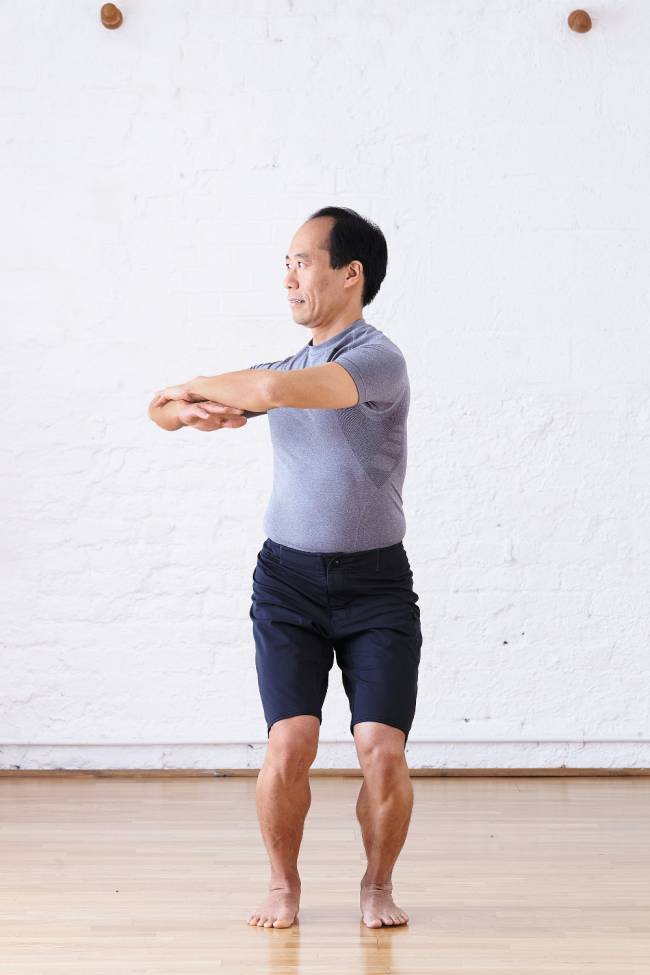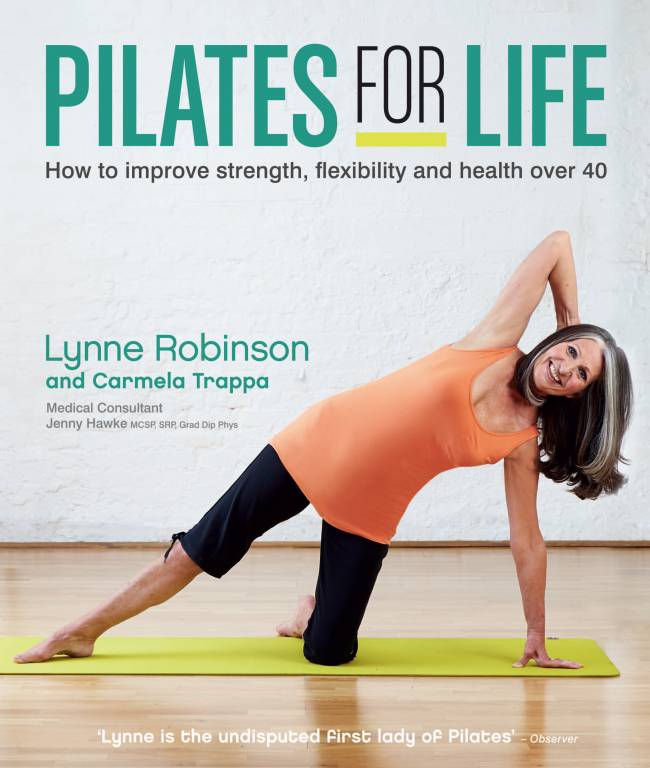Lynne Robinson, Founder of Body Control Pilates, shows DAD.info that Pilates is far from being a keep-fit fad for girls…
If you thought Pilates was just for the girls, think again. Not many people realise that Joseph Pilates’ original clients in his New York studio were male athletes rather than female dancers.
Born in Germany in 1883, Joe initially made his living teaching self defence and fitness to the army and police. Max Schmeling, a famous heavyweight boxer at the time, invited him over to New York in 1920s to train the boxers at his boxing gym. He would have had very few female clients at that time.
Joe, together with his wife Clara, set up his first ‘Contrology’ studio on Eighth Avenue in the same block as New York City ballet, so it wasn’t long before the dancers discovered he had a brilliant new exercise method for preventing and recovering from injury. I think it’s fair to say that then the girls slowly edged the guys out of the picture! Many of those dancers went on to become his first trainee teachers, and so the method spread. For years the dancers dominated the Pilates scene but that’s all changing now. The boys are certainly back!
Elite athletes, Premier League footballers (I’ve worked for many years with Chelsea F.C. and West Bromwich Albion), England cricketers and rugby players and many Olympic squads have added Pilates to their training schedules. Cyclists, rowers, runners, golfers, tennis players… there is hardly a sport which doesn’t now recognise the value of Pilates.
Whether you are an amateur or a professional, we can help improve your motor control, teaching you precision of movement, improving your posture, breathing (essential for stamina) and core stability. Pilates promotes that perfect balance of strength and flexibility. It can help you maximise the effectiveness of a gym workout by ensuring that you move with awareness and control.

While athletes might use it to enhance performance and help prevent injury, it has other health benefits. Our evening classes are now full of businessmen doing Pilates to help manage joint problems such as chronic lower back pain and to destress and unwind after a hard day at the office. No more classes with one ‘lonely’ male, now the ratio is much healthier!
In fact, an increasing number of men are now training to teach Pilates, with recent students including two former soldiers and three professional footballers (we work closely with the PFA).
Below I’ve chosen five exercises to add to your normal exercise routine. The first exercise will teach you The Fundamentals of Body Control Pilates: ABCs of Alignment, Breathing and Centering (core stability). Don’t skip it because it looks simple, you must understand and absorb these Fundamentals to really nail the technique.
Pay attention to the detail of each exercise, it’s crucial to getting them right. The last exercise is considerably more challenging.
It is always advisable to check with your doctor before exercising.
The Relaxation Position
This exercise includes the Fundamentals, the ABCs of Alignment, Breathing and Centering (Core stability).
Starting Position
Lie on a mat with your knees bent, feet hip-width apart and parallel. Check that your pelvis is level (neutral) and your spine retains its natural curves. Place a towel folded flat under your head to keep your neck long. Arms lengthened by your sides. Take a few breaths, wide and full into the back and sides of your ribcage.
Action
1. Breathe wide into the ribcage.
2. Breathe out, and gently engage your pelvic floor muscles working from back to front (as trying to prevent passing wind), you should feel your ‘bits’ lift. This connects your core muscles. It’s like doing an internal zip.
3. Breathe in and release your ‘core zip.’
Repeat a few more times but try adding a few breaths as you hold the internal zip. Breathe wide and full into the back and sides of your ribcage, before releasing.
If you found it hard to breathe, you have zipped up too far!
IMPORTANT
With the following exercises, you should use only enough core connection or zip to control your movements. You will see this instruction: Use your core (zip) appropriately to control your alignment and movement.
Less is more, you may not need to engage them at all, but stay aware of control from this centre.
Knee Rolls
This is a great exercise for increasing mobility in the hips joints while trying to maintain a stable relationship between the hip, knee and ankle joints. It also challenges the stability of your spine as the legs move independently from the hips. Harder than it looks.
Starting Position
The Relaxation Position. Position your legs slightly wider than hip-width apart. Reach your arms out on the mat slightly lower than shoulder height with your palms facing down.
Use your core (zip) appropriately to control your alignment and movement.
Action
1. Breathe in wide.

2. Breathe out as you roll your left leg in from the hip joint and simultaneously roll the right leg out, also from the hip joint. Both knees will therefore roll to the right; allow your feet to peel slightly off the mat.

3. Breathe out and return both legs back to the centre at the same time.

Repeat to the other side and then repeat the whole sequence up to five times.

Watchpoints
- Attempt to keep your pelvis still and square; although there will be slight reactionary movement; it is not your main objective to rotate the pelvis and spine.
- Although you should have a sense of release in your hip joints, control the movement of your legs and don’t just allow them to ‘drop’ to the side.
- Keep your chest and the front of your shoulders open and avoid any tension in your neck area.
The Cat
This will gently mobilise and lengthen your spine. The core challenge here is to control your spine vertebra by vertebra.
Starting Position
Come onto all fours with your hands beneath your shoulders and your knees directly beneath your hips. Your spine should be lengthened with its natural curves.
Use your core (zip) appropriately to control your alignment and movement.
Action
1. Breathe in wide to prepare.

2. Breathe out as you roll your pelvis underneath you as if directing your tailbone between your legs. As you do so, your lower back will gently round. Continue this movement allowing your upper back to also round, followed by your neck, and finally nod your head slightly forwards.

3. Breathe in wide to the lower ribcage.

4. Breathe out as you simultaneously start to unravel the spine, sending the tailbone away from you, bringing the pelvis back to neutral as you also lengthen the head and upper spine back to the Starting Position.
Repeat 8 times.
Watchpoints
- Ripple through the spine, segment by segment, don’t skip sections.
The Dart
This exercise is a very important one as it strengthens your back muscles and helps to reverse the effects of being hunched over at desk all day.
Starting Position
Lie on your front in a straight line. Place a folded towel under your forehead. Have your arms down at your side with your palms facing in. Legs are together in parallel, toes pointed.
Use your core (zip) appropriately to control your alignment and movement.
Action
1. Breathe in wide to prepare.

2. Breathe out, reach through your fingertips and, leading with the crown of your head, lift your head, neck and upper back from the mat. At the same time squeeze your inner thighs together. Keep your feet down.

3. Breathe in and feel the length of the body from the tips of your toes to the top of your head.

4. Breathe out as you lower back down with control. Release the legs.
Repeat 8 times.
Watchpoints
- Do not come up too high. Think long and strong.
- Keep both sides of your waist lengthened.
- Keep looking straight down at the floor.
Squat and Rotate
This challenging exercise combines many of the movement skills needed in any rotational sport, such as football, rugby, tennis, cricket and golf. It improves and strengthens the hip, knee and ankle, encouraging the stability of the lower body while moving the upper body.
If you like you can break the exercise down. Practice first just the rotation, keeping the legs straight and the pelvis square to the front. Then add the squat and rotate. Then add the final straightening of the legs as you rotate back to the front.
Starting Position
Stand tall on the floor, feet hip-width apart. We have given you three different arm positions of increasing difficulty: arms lengthened down by your side; arms folded one over the other just at chest level; hands clasped behind your neck, elbows remaining within your peripheral vision.
Use your core (zip) appropriately to control your alignment and movement.
Action
1. Breathe in wide to prepare.

2. Breathe out as you bend your knees and hips, until your thighs are parallel to the floor.

3. Breathe in and maintain the position while you rotate your head, neck and spine towards the right.

4. Breathe out as you straighten both legs, keeping the spinal rotation.

5. Breathe in as you return your head and spine to the Starting Position.

Repeat 5 times, alternating the rotation.
Watchpoints
- While rotating your head and spine, keep the pelvis in neutral and knees facing forwards.
- Bend the knees and hip only so far as you can to keep the pelvis and spine in neutral.


Exercises taken from The Pilates Bible and Pilates for Life, both co-authored by Lynne Robinson (Kyle Books). For more information, go to bodycontrolpilates.com







